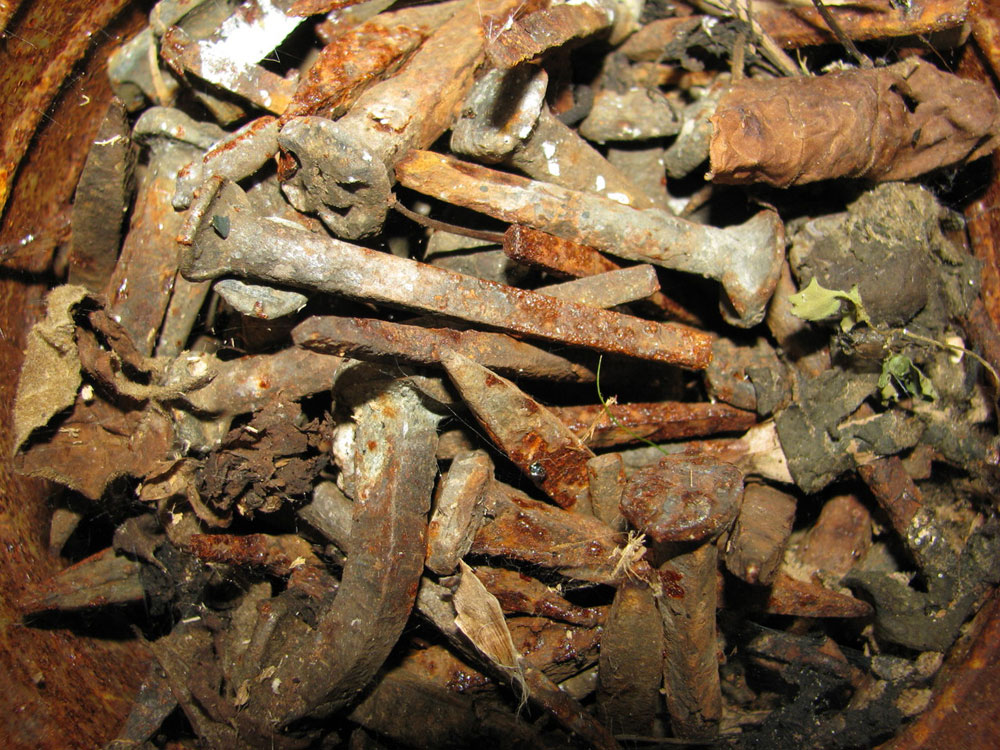Tools are wonderful! Without them we could not get even 1/3 of the things done that we normally do throughout the course of a day. That is why it is very important to take care of your shop tools. If you have a wood shop, auto mechanic shop, repair shot – or use tools daily – you are bound to get some rust on them. Here is how you clean them up and keep them clean. Things You’ll Need: 1. WD-40 2. Nylon Scoth-Brite pad 3. Clean Shop rag 4. Boeshield Rust-Free (optional) 5. Boeshield T-9 Rust Inhibitor (optional) 6. Naval Jelly (optional) 7. foam brush 1. When cleaning the rust off of your metal tools, I recommend that you start by scraping off any loose rust and any dirt residue with a nylon scrub brush or pad and then lightly spraying the rusted surfaces with a penetrating lubricant like WD-40. Once you have sprayed the tool with WD-40, scrub it again with the heavy-duty nylon Scotch-Brite pad or nylon scrubber to clean off the rust that the oil is lifting. This works best for surface rust and corrosion. DO NOT USE SANDPAPER AS THIS WILL SCRATCH YOUR METAL TOOLS. 2. Then take your shop rag and wipe off the excess WD-40 penetrating lubricant and any dirt or rust before putting the tool away to avoid trapping any moisture against the metal. You can then use a protective coating like T-9 in step 4 to protect the tool long-term. 3. For more corroded metal tools and heavy rust build-up, you can use a spray-on, wipe-off, acid-based rust remover. A good one that I have seen used by professionals, and one that I use as well is called Rust Free, made by Boeshield. Follow the directions on the bottle, and wipe off any excess on parts of the tool that are not corroded to avoid the solution from eating through good parts of the tool. 4. Once the Rust-Free has done its job, wipe the tool down with a clean shop rag to get all of the extra solution off. An optional step that will help to keep your tool better protected from future corrosion and rust is to spray on a rust-inhibitor from Boeshield called T-9. You can usually find this right by the Rust-Free at hardware stores, and the T-9 is good because it leaves a protective waxy film on the surface of your tool. I also recommend using this because it does not ruin paint, plastic or alloys. You will also want to wipe off excess T-9 with a clean shop rag. T-9 is commonly used to protect aircraft and boats, so you might be able to find it at a Marina if not in your local hardware store. 5. If you do not want to use the rust-free spray on, or you are having a hard time finding it, you can also use a commonly found chemical for getting rid of tough rust and corrosion called naval jelly – but this stuff is nasty and I do not recommend that you use it for delicate tools. Naval Jelly is best used on bikes, patio furniture, railings – exterior hardware, etc. as compared to tools. But if you have heavy equipment with a lot of rust, you may want to use the naval jelly. Scrape off any loose rust and any dirt residue using the nylon brush. To apply naval jelly, wear latex gloves and simply brush it on the metal with a foam brush or wipe it on with a shop rag. Let it dry for 5-8 minutes and then clean it off with fresh water. 6. OPTIONAL – you can prime and paint surfaces of your tools treated with the rust-free or Naval Jelly up to 24 hrs after application. If you are not going to pain the tool, then use the T-9 protective coating. 7. Now that you have done all of that work to clean your tools – STOP LEAVING THEM OUTSIDE IN THE RAIN OR IN BUCKETS FULL OF WATER. Put the back in their tool boxes and cases where they belong!







